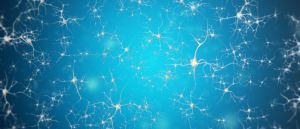
BioTechniques News
Beatrice Bowlby

One of the largest genome-wide studies to date has brought researchers a TAD closer to understanding the genetic factors contributing to autism.
Autism spectrum disorder (ASD) is a collection of conditions characterized by finding social and communication interactions difficult and exhibiting repetitive, restrictive behaviors. Much is unknown about why and how autism develops, and scientists have been surprised to find that autism can occur even when ASD-related genes are not directly mutated.
To help unravel the genetic mysteries of autism, researchers from the RIKEN Center for Brain Science (Tokyo, Japan) have conducted one of the largest meta-analyses of whole-genome-sequencing datasets for ASD to date. Collating data from approximately 5000 individuals with autism, their unaffected siblings and their parents – using the Simons Simplex Collection (SSC) and the Simons Foundation Powering Autism Research for Knowledge (SPARK) datasets – the team delved deep into the genome to investigate its genetic roots.
 Brain inflammation in children linked with neurological disorders
Brain inflammation in children linked with neurological disorders
Researchers have discovered that brain inflammation in early childhood may cause neurodevelopmental disorders such as autism and schizophrenia.
The researchers demonstrated that topologically associated domains (TADs) play an important role in autism risk. TADs are fundamental units of 3D nuclear organization that impact the regulation of gene expression. Focusing on mutations that are not inherited from parents but arise during gametogenesis and embryogenesis – termed de novo variants – they discovered that TADs regulate the effects of rare promoter variants for autism.
“Our most important discovery was that de novo mutations in promoter regions of TADs containing known ASD genes are associated with ASD risk, and this is likely mediated through interactions in the 3D structure of the genome,” explained senior author Atsushi Takata.
The team also conducted characterization of the promoter de novo variants located in autism TADs alongside a TADome-wide association study. To validate their findings, they used CRISPR-Cas9 to introduce de novo promoter variants into human induced pluripotent stem cells (iPSCs). The team found the strongest enrichment using TADs in the iPSC-derived neurons. These neurons represent recently differentiated neurons, supporting previous studies that early developmental neurons are important in autism development.
Currently, genetic testing is not used to diagnose autism; however, it can help uncover its cause and help the autistic individual and their family access support.
Speaking on the clinical potential of the study’s findings, Takata commented: “At the very least, when assessing an individual’s risk for ASD, we now know that we need to look beyond ASD-related genes when doing genetic risk assessment and focus on whole TADs that contain ASD-related genes. Further, an intervention that corrects aberrant promoter–enhancer interactions caused by a promotor mutation may also have therapeutic effects on ASD.”
The post Researchers get a TAD closer to uncovering the genetic architecture of autism appeared first on BioTechniques.
Powered by WPeMatico
